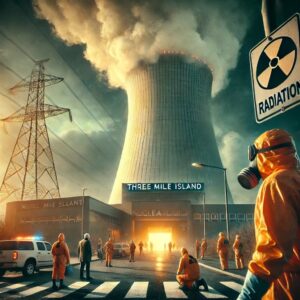On March 28, 1979, the United States faced its most serious nuclear accident when a partial meltdown occurred at Three Mile Island Nuclear Generating Station in Pennsylvania. What started as a minor mechanical failure quickly spiraled into a crisis that shook the nation’s confidence in nuclear energy. A cooling system malfunction in Reactor 2 led to overheating, causing the reactor’s core to partially melt. The situation worsened as misinterpretations of warning signals led plant operators to take incorrect actions, further escalating the emergency. The world watched anxiously as officials struggled to contain the damage, fearing a full-scale catastrophe.
Panic spread throughout Pennsylvania as conflicting reports left the public uncertain about the potential dangers of radiation exposure. While the meltdown was eventually controlled without any immediate deaths or injuries, thousands of residents evacuated their homes in fear of contamination. Parents rushed to move their children away, businesses shut down, and a national debate erupted over the safety of nuclear power. Although radiation releases were minimal, the psychological and economic impact was immense. Trust in nuclear energy plummeted, leading to stricter regulations and a decline in new plant construction across the United States.
The Three Mile Island accident became a turning point in nuclear safety policies. It exposed critical flaws in plant operations, emergency preparedness, and public communication. In response, the U.S. government and the nuclear industry implemented sweeping changes, including improved training for plant operators, stricter safety protocols, and the creation of independent oversight agencies. Despite the lessons learned, the disaster left an enduring scar on the nuclear industry, fueling skepticism that persists to this day.
Decades later, the legacy of Three Mile Island remains a powerful reminder of both the potential and the perils of nuclear energy. While advancements in technology have made nuclear power safer and more efficient, the accident continues to shape public perception and energy policy. It stands as a cautionary tale—proof that even the most advanced systems are not immune to human error and mechanical failure.

